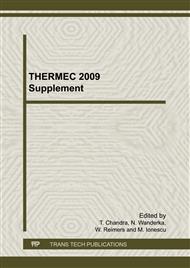p.124
p.130
p.136
p.142
p.147
p.153
p.159
p.165
p.171
An Enriched 2D Multi-Scale Model Based on a Cosserat Continuum for the Analysis of Regular Masonry
Abstract:
A multi-scale nonlinear homogenization procedure is presented for the analysis of the in-plane structural response of masonry panels characterized by a regular texture. A Cosserat continuum model is adopted at the macroscopic level, while a classical Cauchy model is employed at the microscopic scale; proper bridging conditions are stated to connect the two scales. The constitutive behaviour of bricks and mortar at the microscopic level is based on a scalar damage model, non symmetric in tension and compression. As for the regularization of the strain softening response, the standard fracture energy method is used at micro-level, while at the macro-level the inner capabilities of Cosserat continuum are exploited. A numerical example is presented and a comparison with an experimental test is performed.
Info:
Periodical:
Pages:
147-152
Citation:
Online since:
January 2010
Keywords:
Price:
Сopyright:
© 2010 Trans Tech Publications Ltd. All Rights Reserved
Share:
Citation:


